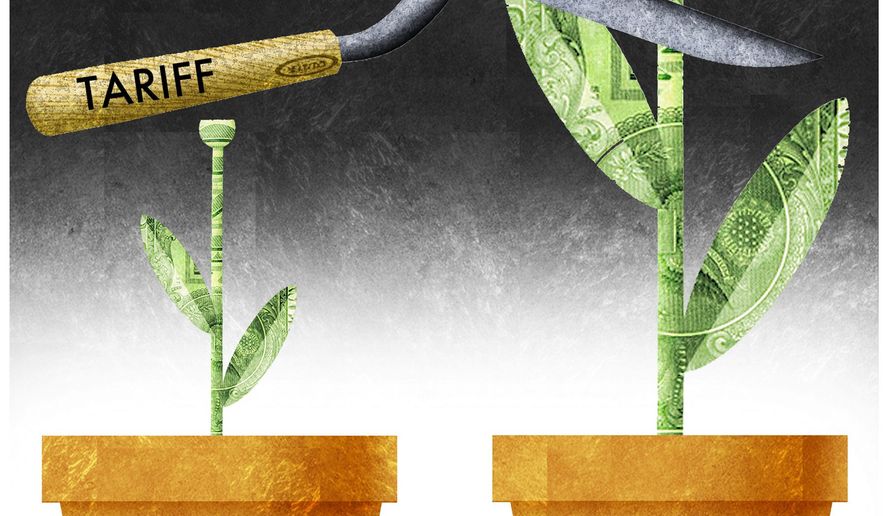The 'new normal' was not
By Richard W. Rahn - - Monday, July 30, 2018
ANALYSIS/OPINION:
The “new normal” is 2 percent economic growth as we were endlessly told by Hillary Clinton and Barack Obama supporters in the 2016 campaign.
Unlike all previous administrations, economic growth never reached a 3 percent annual rate during the Obama years.
Many economists who were Obama and Clinton supporters endlessly repeated the mantra that the age of great productivity growth was over and that Americans had to get used to a sluggish economy.
Some of us argued that the reason for the subpar economic performance was due to the anti-growth policies of the Obama administration that Mrs. Clinton was promising to continue.
Many in the mainstream media and economic establishment were highly critical of those of us who were pushing tax cuts and deregulation as a way to boost economic growth, claiming we were unrealistic.
On Friday, the government announced that the economy grew 4.1 percent in the second quarter.
The criticism was no surprise since I had been through these same arguments in the Reagan years. The following is from The Wall Street Journal on Jan. 23, 1984:
“Back in mid-1982, when a pack of critics were baying at Reaganomics, even the supply siders at the U.S. Chamber of Commerce [where I was chief economist] were feeling the heat But now it’s 1984 Mr. Rahn is still at the Chamber and if prescience has anything to do with it, he could hardly be in better shape. He and his supply siders called the 1983 recovery almost on the nose. They predicted 3.2 percent real growth in gross national product. The official outcome, announced Friday, was 3.3 percent.” (Note that the consensus forecast of 45 economists was 2.5 percent at that time.)
Economic forecasting is far from a precise science, and no one is going to be correct all of the time. However, what is striking is how many forecast teams, such as those at the Fed and the IMF, after spending many millions on forecasts, continue to get it wrong because they both use unrealistic (largely Keynesian) models and often mis-specify the variables.
Both organizations consistently projected much higher growth during the Obama administration than occurred and underestimated the positive effects of the Trump regulatory and tax cuts.
Many in the mainstream media fail their audiences by not disclosing the dismal forecast records of those Keynesian economists like Larry Summers and Paul Krugman who they tout as experts.
The supply-siders like Arthur Laffer have a record of being closer to the mark. Mr. Trump’s chief economic advisor Larry Kudlow and Undersecretary of the Treasury David Malpass both served in the Reagan administration and have had impressive forecast records over the decades.
Slow economic growth or worse is almost always the result of policy mistakes. The economy is doing well now largely, as noted, because of the tax and regulatory improvements. But there are real dangers — notably the possibility of damaging tariffs and other trade restrictions. The president has undertaken a very risky strategy with the stated goal of improving the terms of trade for the United States. It is unclear at this time if the successes in these trade battles will outweigh what are likely to be some defeats.
The president still seems to labor under some basic misconceptions by focusing on the trade deficit. The United States has run trade deficits for most of its existence, and still performed much better than most countries of the world. Many individuals and businesses wish to invest in the United States because of profitable investment opportunities and because it is a safe place to put money. Foreigners who wish to invest in the United States must acquire dollars to make the investment — and they obtain most of the dollars they need by selling things to U.S. consumers — which results in a trade deficit, but increases U.S. economic growth.
I run a trade deficit with Apple because I buy its products and it buys nothing from me. My Apple computers, phones, etc. enable me to work more efficiently, thus increasing my income. Some of this income I save, which I have used to buy Apple stock, as have millions of others. Apple issued stock to acquire the funds it needed to create and produce wonderful products. Apple benefits when I buy Apple products, and I benefit when I get a positive return on my Apple investments — a win-win situation. If Apple was a country rather than a company, my trading with it would still be a win-win situation.
Tariffs are often destructive, such as the case of the aluminum tariff. The United States only has seven aluminum smelters to make primary aluminum that employ about 4000 people. The United States buys much of its primary aluminum from Canada because of less expensive electricity, which is a major cost in aluminum production. Hundreds of thousands of U.S. workers are in aluminum fabrication industries like airplanes, automobiles, pots and pans, etc.
A tariff increases the cost of aluminum, putting all of those who work in aluminum fabrication at risk to perhaps save only a few jobs in aluminum smelters.
Bad trade decisions will derail the economic growth that the good policies created. It’s time for a less risky and more cautious trade strategy.
• Richard W. Rahn is chairman of Improbable Success Productions and on the board of the American Council for Capital Formation
https://www.washingtontimes.com/news/2018/jul/30/the-united-states-is-doing-better-than-it-did-duri/

No comments:
Post a Comment